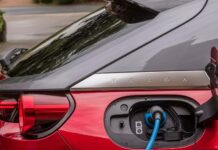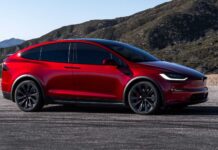[ad_1]
One argument that gets thrown around online regarding electric vehicles is that their high-voltage batteries – the thing that provides energy to the electric motors – will be more or less deadweight in about a decade, making them unworthy rivals to gas-powered cars.
While this may have been true before the turn of the millennium, advancements in battery chemistry and thermal management have greatly increased the longevity of lithium-ion packs to the point where they can be used for longer than ever before.
At the end of August, a study from Recurrent Auto that analyzed battery data from about 6,300 Tesla Model 3s in the United States showed that, on average, they still had about 90 percent capacity after five years of daily usage.
Now, though, a video published by well-known Tesla enthusiast Andy Slye on this YouTube channel (embedded at the top of this page) shows how his Model 3 still has 95 percent battery capacity after five years and roughly 135,000 miles driven.
Mind you, his Long-Range EV is powered by the nickel cobalt aluminum (NCA) type of battery that’s susceptible to higher levels of degradation when charged to over 80 percent state of charge (SoC) compared to the lithium iron phosphate (LFP) chemistry, making it quite an impressive feat.
What makes this even better is the methods he used to achieve a degradation rate this low are very simple and can be applied by just about every EV owner out there.
First off, he mostly charges his Model 3 at home from a Level 1 or Level 2 charger, even though he has a whopping two million free Supercharging miles in his Tesla app that he can use to recharge at the company’s vast network of DC fast chargers.
Second – and this is probably the most important thing the owner of an EV with NCA or NCM (nickel cobalt manganese) batteries can do to make them last as long as possible – he sets the charging limit to 80 percent in the car’s settings.
It’s even recommended by the car itself on the screen, but some drivers who experience range anxiety may gloss over that and recharge daily to 100 percent, even though a lower state of charge might be sufficient for their daily commute.
And that’s pretty much it. As for the difference in range degradation between EVs that predominantly use DC fast chargers compared to EVs that get their juice predominantly from a home charger, Recurrent Auto’s data showed no significant difference between the two charging methods, as long as the preconditioning feature is doing its job correctly and the battery’s state of charge isn’t at very low or very high levels when plugging into a DC fast charger.
[ad_2]
Source link
















